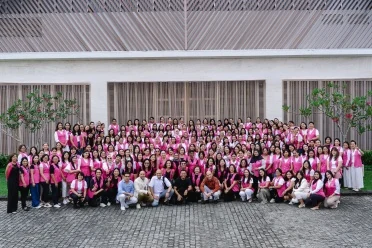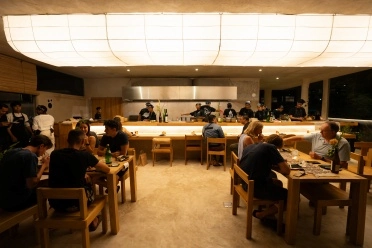Bali, an island renowned for its rich cultural heritage and deep spiritual roots, offers a unique glimpse into the traditions that shape its society. Among the most profound of these is Ngaben, the Balinese Hindu cremation ceremony. This centuries-old ritual is far more than a farewell; it is a vibrant celebration of the soul's journey toward rebirth. Discover more about this extraordinary ceremony and uncover the deep spiritual meaning that makes it truly remarkable.
A Balinese Journey of the Soul: Ngaben Ceremony
A Celebration of Life, Death and Rebirth
Ngaben, which literally means "turning into ash," is deeply rooted in Hindu beliefs about the cycle of life, death, and rebirth. In Balinese culture, life is seen as a continuous cycle that includes birth, death, and reincarnation. The ultimate goal is to reach "moksa," a state of oneness with God, breaking free from this cycle. For the soul to achieve this, it must be purified through cremation, a process believed to cleanse and release it from earthly ties.
A Colorful, Elaborate Ritual
The Ngaben ceremony is much more than a simple cremation; it is an elaborate and expensive ritual that can take months or even years to prepare. Families save for a long time to afford this significant event. In many cases, the deceased may be temporarily buried or stored until a "good day" (hari baik), determined by a priest, is found on the Balinese calendar for the ceremony. It is not uncommon for less wealthy families to join a cremation organized by a more affluent family to share the costs.
Before the cremation, the body is cleansed and provided with symbolic offerings to ensure a perfect rebirth. A priest guides the soul with prayers, requesting a smooth passage to the afterlife. Central to the Ngaben procession are two vital components: the "Waddhu" and the "Lembu."
Waddhu (or Bade): This is a multi-tiered ceremonial tower made from bamboo, wood, and paper, often adorned with vibrant colors and intricate designs. The height and number of levels of the Waddhu symbolize the deceased's social status; the more levels, the higher the status. The tower is carried in a lively procession, turned around several times to prevent the spirit from lingering and to guide it to its next destination.
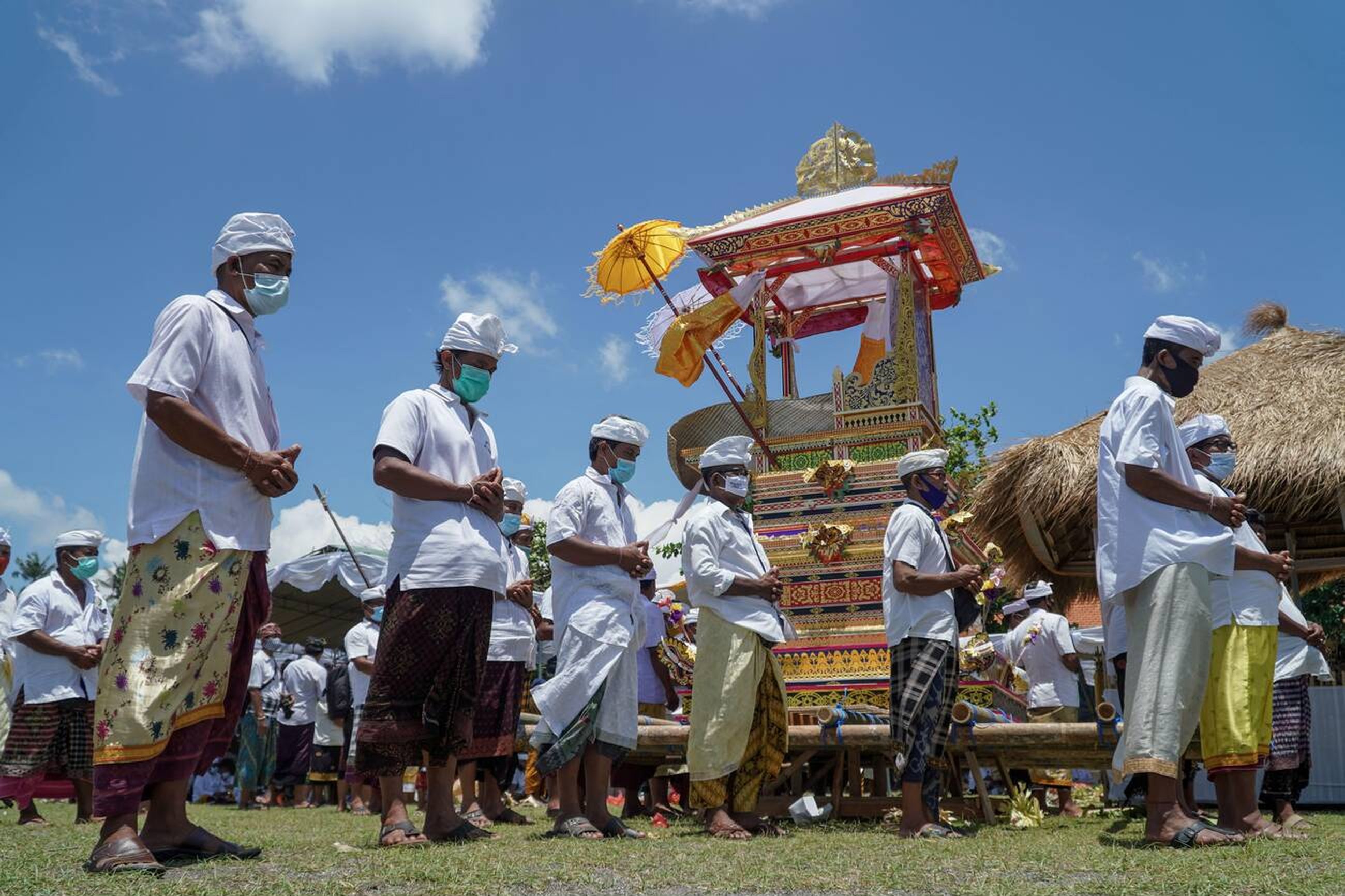
Lembu: Meaning ox, the Lembu is a sarcophagus or coffin shaped like an animal, usually a bull or cow, which is considered sacred in Balinese Hinduism. The Lembu is carried along with the Waddhu and eventually burned in the cremation, representing the release of the soul.
Pelebon: The Royal Farewell
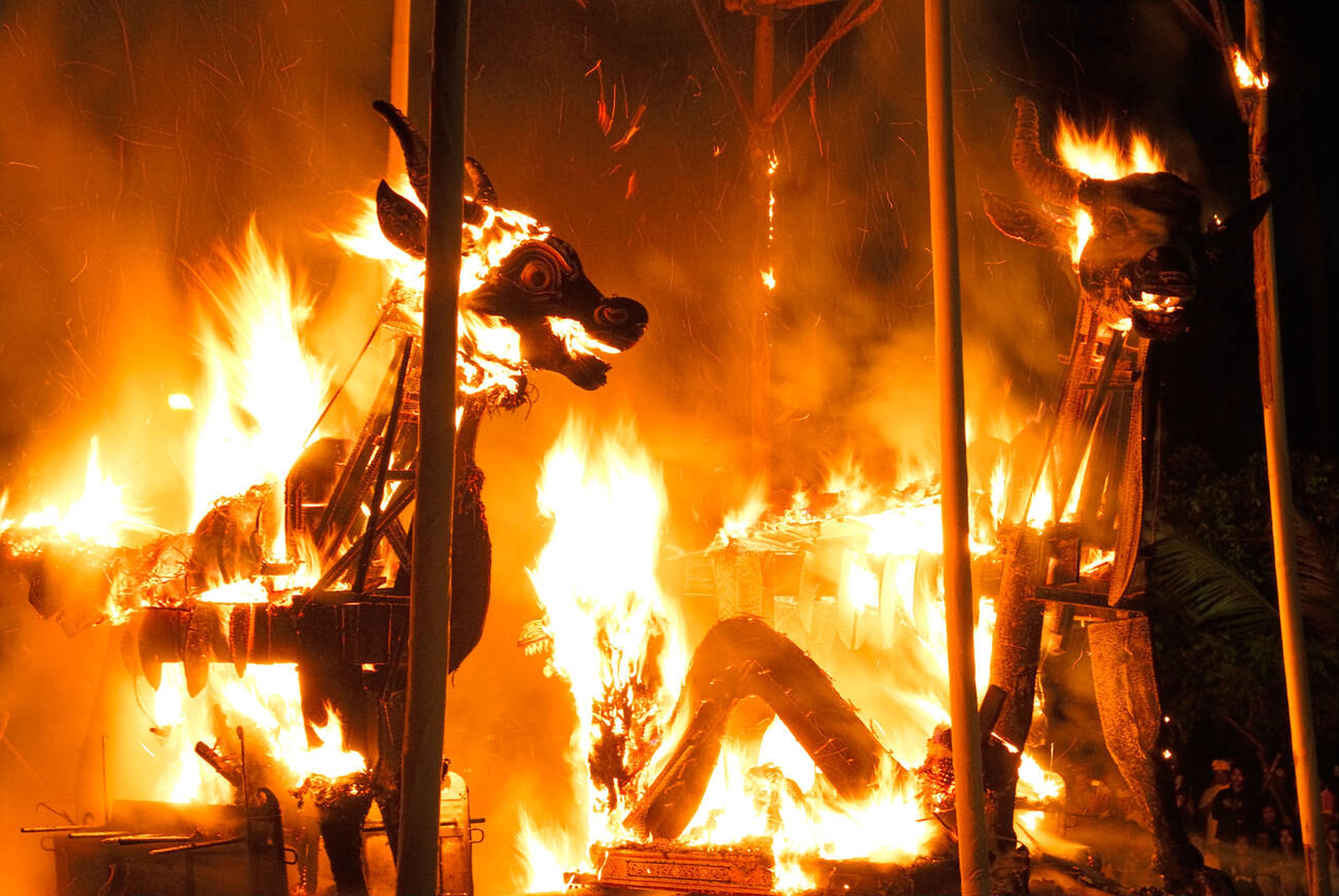
While Ngaben is the cremation ritual for most Balinese, the upper classes and royalty have a different ceremony called "Pelebon," which is even grander and more extravagant. The Waddhu used in a Pelebon can have up to nine levels, signifying the high status of the deceased. These ceremonies can attract thousands of participants from across the island, drawn by the opulence and cultural significance of the event.
The Role of Music and Dance
Music and dance play an integral role in the Ngaben ceremony. A "Gamelan," a traditional Balinese orchestra consisting of percussion instruments, often accompanies the procession. The lively music adds to the festival-like atmosphere, highlighting the Balinese perspective that death is not an end but a transition to a new beginning. Traditional dance performances further enhance the ceremony, adding a visual spectacle that complements the spiritual significance of the event.
Cremation and the Journey to the Afterlife
Once the procession reaches the cremation site, the priest lights a fire to burn the Lembu and the Waddhu. Mourners reflect during this time, watching the flames as they consume the earthly remains. After the cremation, the ashes are collected and scattered into the sea, symbolizing the soul's return to the universe.
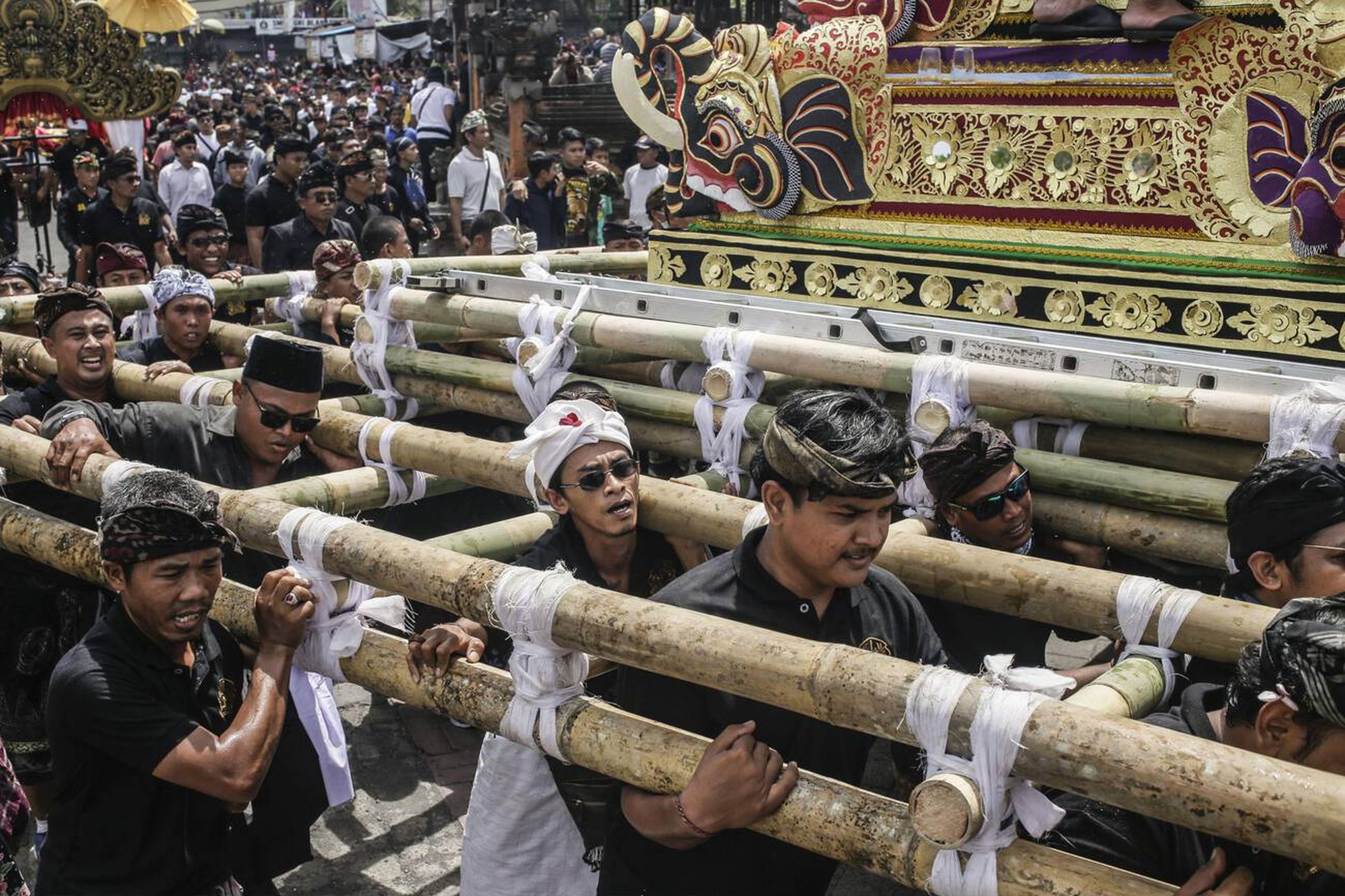
The process continues over the next 12 days, during which the family creates and burns effigies of the deceased. These effigies are also scattered in the ocean, completing the journey of the soul and marking the family's acceptance of the death.
Types and Variations
Ngaben ceremonies vary depending on the age, status, and circumstances of the deceased. Some unique types include:
Ngaben Sawa Wedana: For bodies that have not been buried before the ceremony.
Ngaben Asti Wedana: For bodies that have been previously buried.
Ngaben Swasta: Conducted when the deceased is far away or the body is missing.
Ngaben Ngelungah: For children who have not yet lost their baby teeth.
Ngaben Warak Kruron: For infants who passed away before birth.
Ngaben ceremony is more than just a cremation ritual; it is a profound cultural and spiritual practice that embodies the Balinese Hindu belief in life, death, and rebirth. It is a vibrant, communal event that transforms a time of mourning into a celebration of the soul's journey, reflecting the unique Balinese way of embracing life and death with equal fervor.



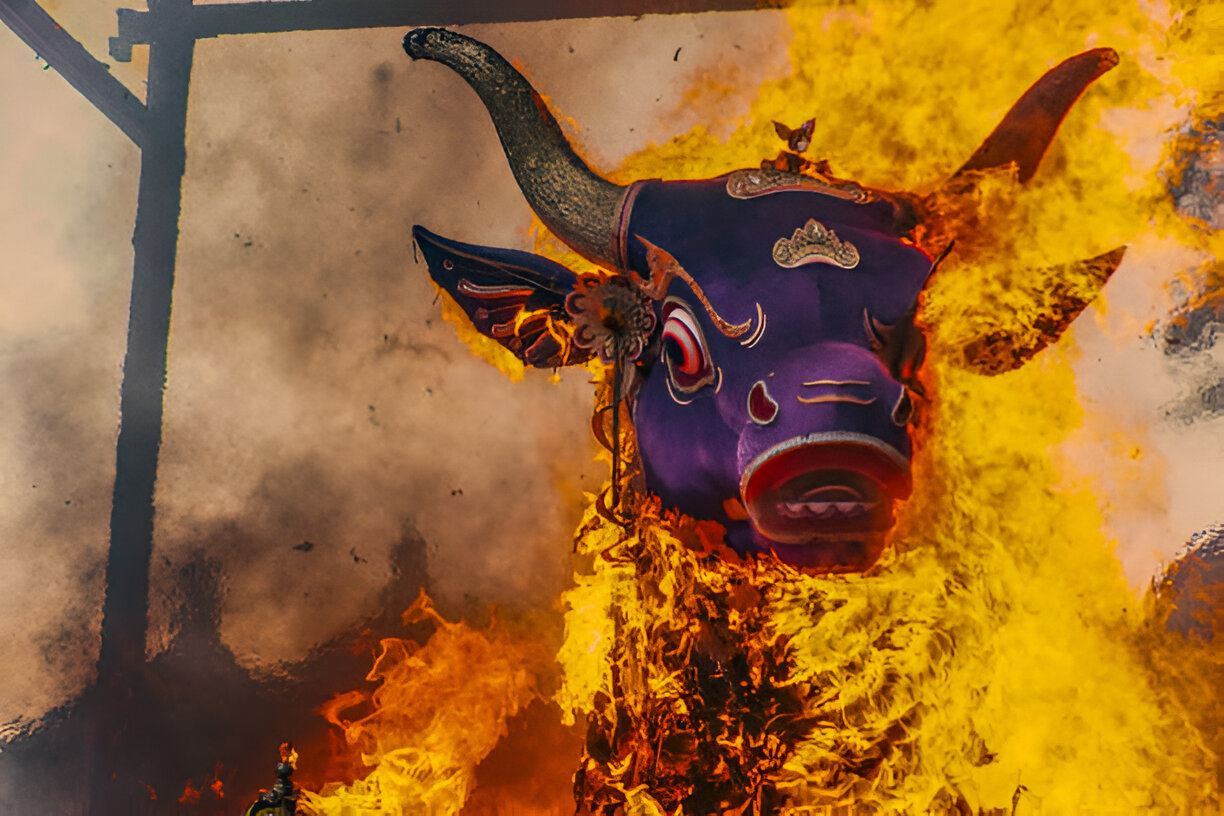
 Billy Bagus
Billy Bagus
 Sep 11, 2024
Sep 11, 2024


